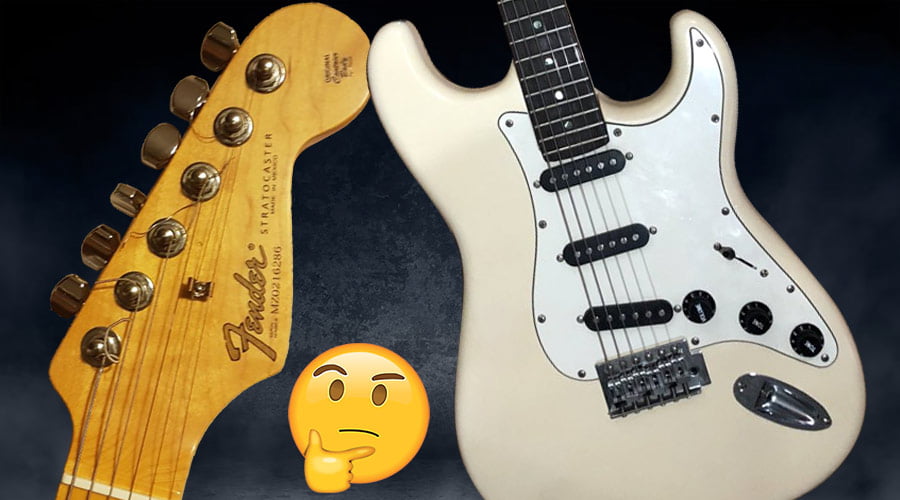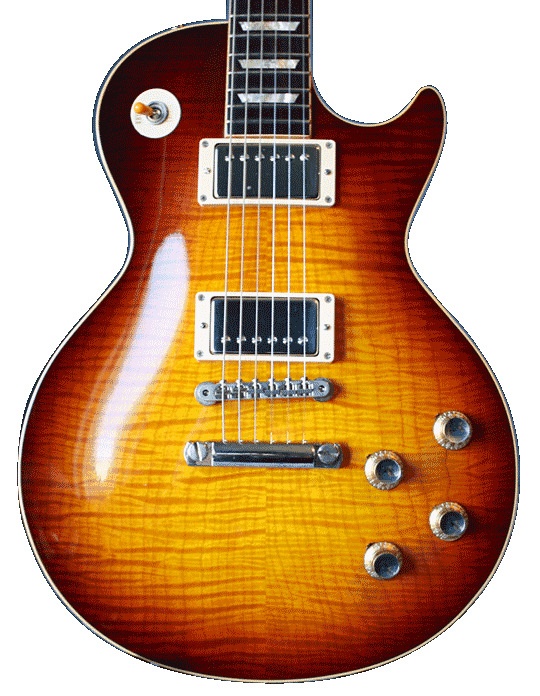
If you’ve ever had the pleasure of walking around Times Square in New York City you’ve probably wondered just how they can possibly sell those luxurious Platinum watches for $100. You know, the ones that are 3 thousand dollars on a good day. It’s easy, they are fake!
Since its inception in 1954, the Fender Stratocaster has become one of the most recognizable, and desirable, electric guitars on the planet. In this modern day that popularity has had an unfortunate consequence in that yes, there are fake Strats out there. There may not be a fake under every bed but there are enough “Scamcasters” out there to warrant a good look at how to pick one out of the digital marketplaces and avoid it.
The Rise of Scamcasters
The internet brought with it easy, accessible, distance retailing, selling stuff to someone far away. As the large-scale retail concerns reached more and more people, so rose the alternative sellers, and there were bargains to be had.
Some guy three states away selling stuff out of his garage. Auction sites helped organize those garage sellers. Social media sites developed their own markets for their users. And classified ads went all digital and every locality has its own digital sale ads.
With all of those bargains multiplying by the day, it was only natural for the super bargain fakes to appear and appeal to many a buyer. The Scamcaster is a thing, and it is a thing to be avoided at all costs.
A Picture Is Worth a Thousand Words…
We will guess you’ve come across a particular Fender Stratocaster model you must have. You’ve got two or three good pictures of the front and back of the guitar and a minimal description. We can assume you don’t have pictures of the insides, and you can’t take the guitar apart and probably don’t want to.
Using the same internet that brought you the suspected Scamcaster, it shouldn’t be too hard to find a few pictures of the front and back of that Stratocaster model from a couple of reputable retailers, the kind of seller that just can’t afford to be selling anything remotely suspect.
Let’s make some fairly simple comparisons of the fake Stratocaster and the real Stratocaster examples to help you avoid, at the very least, buying something that may not be what it is claimed to be, no matter the reason, using nothing but our eyes.
Headstock and Neck
Fender has been cutting and shaping Stratocaster headstocks for almost 50 years, and they never get it wrong. If the suspect headstock is too big, and not proportioned quite like the pictures of the real deal, there’s a warning.
If The Decal Fits
Waterslide decals are easy to come by, but not so easy to place correctly. If the suspect logo is not in the place the real deal logos are, there’s another warning. The script and color are often overlooked, and the real ones will be different. Incomplete decals are also common, if all the things are not there, there’s a not good reason for that.
The two remaining details on the front of the headstock are the string trees and the truss rod access. These should match known examples, and are often overlooked by fakers.
Back It Up
The back of the headstock tells a lot. Fender is fairly consistent with tuning machines and the example pictures will all match. If the suspect guitar has odd-looking machines, there’s a flag.
The serial number on most Fender Stratocasters is on the back of the headstock. These are readily available also and can be quite convincing. Fender is fairly consistent with placement, another often-overlooked detail, so misplacement is another flag.
The best thing to do with a visible serial number is to run it through the Fender serial number lookup. Almost all valid serial numbers will return the appropriate information for that particular guitar, and that is a great starting point for verification. We should note that there are instances of Fender themselves not having any information about their own guitars, but that doesn’t happen often.
The Neck
A good front shot of the neck can reveal a fake Stratocaster in one glance. The two fret marker dots at the twelfth fret are the most overlooked detail on Scamcasters. Fender has been placing those dots since the beginning, and they never miss. Fakers consistently place them too far apart or too close together. A real fast real red flag.
Tele Too
All of the headstock details are equally important, and just as often overlooked, on fake Fender Telecasters. That smaller headstock has just one shape and proportion, easily missed. Decals, string trees, machines, and serial numbers should all be consistent with known good examples and flagged if not. And those two dots at the twelfth have to be right on the Telecaster too and are just as easily spotted.
Body of Evidence
The curves and contours of the Fender Stratocaster are difficult to match. The example pictures will show the appropriate proportions, the width of the waist, and the bottom. There is only one pair of horns for a Strat, done only the way Fender does them. Fakers often overlook these dimensions, and wonky-looking curves are a real tell.
The back of the body will show the trem cover. A simple part that should be easy to fake, but no, it is often missed. Fender uses offset screw placement always, the fakers use symmetrical screw placement, and they fail.
The body of the Telecaster may appear simpler and easier to fake but it is not. The rounded top horn and single cut are often the wrong sizes and easy to see when compared to the real deal. The waist proportions and bottom width are also overlooked details that should be considered a warning if they are off when compared to known good examples.
Around back, the ferrules used in the holes the strings pass through to the Telecaster bridge have been essentially the same for 50 years. Any deviation in their appearance should be considered a warning.
Parts, as they say, is Parts
The pickguard of the Strat is unique. The curves are easily missed, a funny-looking pickguard compared to examples is a good tell. The number and placement of the pickguard screws are easily spotted and are often a fail. There are no legitimate 15-screw pickguards.
The bridge assembly and saddles are an integral part of the Stratocaster, and the example pictures will be consistent in the number and placement of the plate screws, and the type of saddles. Any variation of these parts in the suspect guitar is yet another warning.
The pots and switch have just one placement and one relationship to each other, the one Fender uses on their Stratocasters. The fakers often place the volume pot a bit too low, and the switch a bit too far away and slightly higher. The relationships are easy to spot when compared to the real deal.
And it bears repeating that similar inconsistencies in Telecaster parts can be fairly obvious upon closer look. While simple enough, the pickguard can appear too big, and the screw numbers and placement are easily missed. The Telecaster bridge is usually reproduced too small on fakes and doesn’t look right, while the control plate is often too high on the body and is quite noticeable next to the real deal.
Concluding the Obvious
It is true that the subtlety of design defines the classics, like the Fender Stratocaster. It is also true that the devil is in the details. Fortunately, the fakers are completely unaware of these two facts. It is also fortunate that you are now aware of some very specific design subtleties that can help you make the right decision.
If the price seems too good to be true that’s because it probably is. If the description doesn’t seem to add up to what it claims to be, it probably isn’t. Armed with some details and just a few photographs you too can avoid fake Stratocasters. Buying a fake anything is not good, but a fake guitar? That hurts! So look out for the obvious subtleties, take just a few minutes to compare a few things, and above all, enjoy looking for that just right Fender Stratocaster without worrying too much about the fakes.
Share your thoughts in our forum! 💬
👉 Introduce yourself and show off your Stratocaster and other gear.
Frequently Asked Questions
How can you tell a fake Fender in seconds?
With one reasonably good photo of the front of the guitar. check the logo decal details of color, script, and placement, then the headstock shape and proportions, followed by the distance between the two fret marker dots at the twelfth fret. All of this in the time it takes to look from headstock to mid-neck.
Is a fake Stratocaster worth it?
In a word: Never. No matter how good the deal, no matter how “rare” the guitar, a fake is a fake. There are just too many wonderful, real Fender Stratocasters in the world to settle for a fake.
Is a Partcaster fake?
A Partscaster is made of some, most, or all genuine Fender parts put together to make a Stratocaster, as Leo Fender intended. A Partscaster is a personal compilation of parts that makes the maker happy. It is not a fake. It can, but shouldn’t be, described as something it is not. Close inspection and comparisons can reveal a Partscaster quickly. As long as it is sold as a Partscaster it is a legitimate guitar.
Share this post with your friends using these one-click sharing options:
👉 Click here to share on Facebook.
👉 Click here to share on X.
👉 Click here to share on LinkedIn.

Get the latest reviews, guides and videos in your inbox.